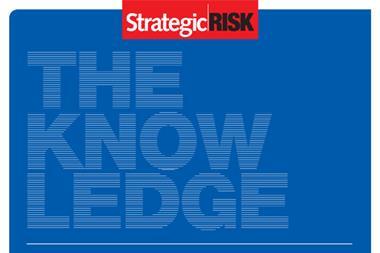To get ahead, companies need to implement different strategies for attracting and retaining staff

Attracting and retaining talent is a key concern for risk managers, as 88% of respondents to StrategicRISK’s survey named this among their three biggest people risk issues their business faces.
When discussing talent management strategies, people often group together attraction and retention, but Emma Codd, managing partner for talent at Deloitte, says they are actually quite different issues with unique challenges.
“Putting both issues together can blur the real concerns that firms have,” Codd says. “For example, firms seeking talent with specialist capabilities [such as those that require Science, Technology, Engineering or Maths (STEM) subjects] may be concerned about a lack of diversity in available talent for the role, while other firms may be comfortable that they can attract talent with the right capabilities but are concerned about the ability to provide a working environment that retains them.”
StrategicRISK’s people risks survey found that companies employ a range of different strategies to attract and retain talent. The most cited strategies were regular training and education, and competitive employee benefits and wellness programmes, both mentioned by 49% of respondents.
| WHAT STRATEGIES DOES YOUR BUSINESS EMPLOY TO HELP ATTRACT AND RETAIN A TALENTED WORKFORCE? | |
|---|---|
| Competitive salaries | 40% |
| Competitive employee benefits and wellness programmes | 49% |
| Regular training and education | 49% |
| Social/cultural activities | 33% |
| Internal communications | 30% |
| Succession planning | 35% |
| Other | 7% |
When it comes to attracting talent to the business, Codd says it is critical for companies to take steps to remove any bias from the recruitment process, and to be able to clearly convey their employee value proposition (EVP) to potential recruits in a way that engages them.
“In terms of retaining, focusing on culture is key – this is not about HR programmes or talent initiatives – it is about understanding what the organisation needs to deliver to its staff in terms of environment and ways of working and taking clear steps to deliver that culture,” she explains.
“Never forget that your employees will be open about their experiences in those social media forums that focus on employers. Thus, what your current employees experience (and therefore report) will have an impact (positive or otherwise) on those you wish to attract.”
For a company to succeed in attracting and retaining a talented workforce, it needs to have a clear strategy for both elements.
“The challenges attached to attracting the best people need to be identified and addressed; this may mean a strategy to change recruitment processes or it may just mean better conveying your EVP,” Codd says.
“Similarly, you need to understand any challenges relating to retention – why are you losing people? Are you losing them at particular points in their careers? Once you understand this you can build your strategy to retain. This may involve some simple steps (such as better visibility of career options), but it may also involve fundamental changes to culture, such as better enabling agile/flexible working or ensuring that your organisation really is inclusive.”
But even with the best retention strategies in place, no employee will stay at a company forever and businesses therefore need to have plans in place to ensure a smooth transition in case key individuals leave the firm.
However, StrategicRISK’s survey found that the majority of respondents say they do not have a (full) succession plan in place, leaving their business at risk should senior figures depart.
To improve succession plans, Codd recommends: “Considering broad succession planning requirements (i.e. not just planning for critical roles), planning a number of years in advance, drawing from wide talent pools, and identifying firm development steps for those being considered will help to deliver a strong and diverse pipeline of well-equipped leaders for the future.”
Click here to read the full report on StrategicRISK’s people risks survey
| WHICH STATEMENT BEST DEMONSTRATES YOUR BUSINESS’S APPROACH TO SUCCESSION PLANNING? | |
|---|---|
| We have a comprehensive succession plan in place for all of our key executives that is regularly reviewed and updated | 26% |
| We have a succession plan in place for most of our key executives that is updated annually | 12% |
| We have a partial succession plan in place but improvements need to be made | 47% |
| We do not have/I am not aware of a succession plan | 15% |




















No comments yet